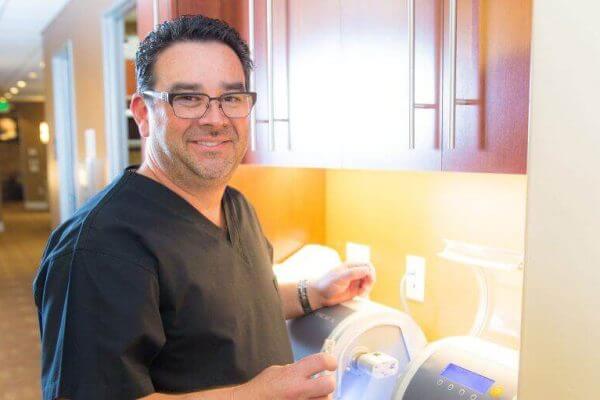Restoring Your Molar Teeth with CEREC Technology
The canines are for gnashing and breaking down chunks of meat. However, the bulk of the workload goes to your molars. These are the last three teeth in each quadrant that are blunt in shape, wider and have larger occlusal surfaces. They usually are bi or even tri-rooted, and their mechanism of action resembles cow or bovine teeth.
Due to certain factors, like cavities, trauma or excess wear and tear, your molars may need to be restored with the help of inlays, onlays or crowns. When this time comes, it would be best to choose the best restorative material that will address function and aesthetics.
Dr. Derek Hauser, DDS, is a general dentist, specializing in cosmetic dentistry using CEREC dental technology by Sirona. The material used in CEREC dentistry is higher quality and more durable, long lasting than dentists who don’t use this technology.
Trust the decision to use CEREC for your molar teeth with Dr. Hauser and Call (951) 244-9495 or Schedule a Consultation Online Today.
Metal Crowns or PFM
Metal crowns are not aesthetically pleasing. However, many dentists use this for molar teeth because they believe that it is resilient to stress. Sadly, metal crowns, especially those that were not adhered to the restoration properly, can cause secondary caries. Bacteria and cavity-causing microorganisms can travel through tiny leaks and can destroy the tooth surface under the metal crown.
Please note that metal crowns are more conservative than PFM. Their main drawbacks include leakage, allergic reactions and the metallic taste.
PFM or CEREC
When it comes to molar teeth crowns, some specialists stay true to porcelain-fused-to-metal restorations. These are more aesthetically acceptable than metal crowns and yet they are not the best restorative option.
This type of crown takes longer to fabricate, as it requires laboratory work. Since PFM is bulky, more of the tooth structure has to be removed as well, which means that it is not as conservative as CEREC. Lastly, some patients are sensitive to the metals used for PFM restorations. If left unchanged, these restorations can cause recurrent inflammatory reactions of the nearby soft tissue and even sinus reactions.
Why CEREC?
CEREC restorations are less reactive than gold and other metals. Therefore, patients are less likely to suffer from irritation, making it a safer choice. Dr. Hauser prefers this type of restorative material because it can be made in less than 20 minutes.
It saves the patient time, as there is no need to come back for your crown, and money, as temporary crowns are not cheap. CEREC restorations can last for about 25 years, if cared for properly, making them the smarter restorative or cosmetic choice.
A Brief Comparison
Metal and porcelain-fused-to-metal crowns are sturdy types of restorations. However, they the use of these options require dentists to remove more of the tooth structure. This can weaken teeth even further in the long run. They also pose more health risks, especially if they contain mercury or nickel. This is why CEREC restorations are preferred by more dentists
If you are looking for a dentist who uses CEREC technology, it would be best to enlist the services of an expert. Dr. Hauser has been in practice for more than 20 years and has used CEREC technology for over 10 years.
He uses CEREC for cosmetic and restorative cases that involve the molars because it is a safe, efficient option for his patients. Find out how CEREC can improve your smile today. Please Call (951) 244-9495 or Schedule an Appointment Online Now.







